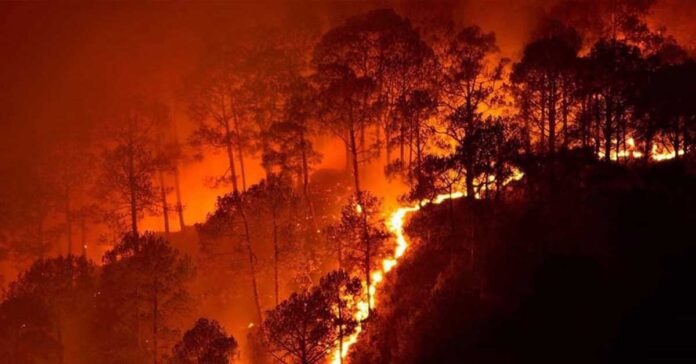California wildfires: More than 400,000 acres are burned in Northern and Central California; with many of the fires depart by nearly 11,000 lightning strikes. Situations become even worse due to high temperature and winds.
Evacuation orders in Santa Cruz County covered 48,000 people, including the campus of the University of California, Santa Cruz, and people being evacuated are kept under the same shelters that increase the risk of COVID-19 spread. People living far beyond the burn zone are battling with the smoke, and beloved sites like Big Basin Redwoods State Park are badly damaged.
Reasons for frequent wildfires
The (Changing) Climate
California, like much of the West, gets most of its moisture within the fall and winter. Its vegetation then spends much of the summer slowly drying out due to scarcity of rainfall and warmer temperatures. That vegetation then serves as kindling for fires.
But while California’s climate has always been fire-prone, the link between global climate change and larger fires is inextricable. Behind the scenes of all of this, you’ve got temperatures that are about two to three degrees Fahrenheit warmer now than they would’ve been without global climate change. This cause the vegetation to dry out even more and that can easily catch fire.
The 10 largest fires since then have occurred since 2000, including the 2018 Mendocino Complex Fire, the most important in state history, and this year’s LNU Lightning Complex, which is burning west of Sacramento.
People
Even if the conditions are right for a wildfire, you continue to need something or someone to flare up it. Sometimes the trigger is nature, sort of a lightning strike, but more often than not humans are responsible.
According to Nina Oakley, assistant research professors of atmospheric science at the Desert Research Institute many of those large fires that you’re seeing in Southern California and impacting the areas where people live are human-caused. Downed power lines become sometimes the rationale for fire.
People now a days decides to live in close proximate with forest. They lived in those areas and also at the same time they sometimes cook their food in open air that can increase the chances of forest fires. Sometimes the tyres of their vehicles can also burst that can become also one reason for fire.
Fire Suppression
According to Park Williams, a bio climatologist at Columbia University’s Lamont-Doherty Earth Observatory for the last century Western United States fought fire, and did pretty well. Every time fire was fought successfully, that means that a bunch of stuff that would have burned didn’t burn. And so over the last hundred years there was an accumulation of plants in a lot of areas. And now when fire starts those fires are burning through places that have a lot more plants to burn than they would have if we had been allowing fires to burn for the last hundred years.
The Santa Ana Winds
Each fall, strong gusts known as the Santa Ana winds bring dry air from the Great Basin area of the West into Southern California, said Fengpeng Sun, an assistant professor in the department of geosciences at the University of Missouri-Kansas City.
Sun is a co-author of a 2015 study that suggests that California has two distinct fire seasons. One, which runs from June through September and is driven by a combination of warmer and drier weather, is the Western fire season that most people think of. Those wildfires tend to be more inland, in higher-elevation forests.
But Sun and his co-authors also identified a second fire season that runs from October through April and is driven by the Santa Ana winds. Those fires tend to spread three times faster and burn closer to urban areas, and they were responsible for 80% of the economic losses over two decades beginning in 1990.
It’s not just that the Santa Ana winds dry out vegetation; they also move embers around, spreading fires.
ALSO READ: Kamala Harris is Joe Biden’s running mate: Things to know about the Indian-American Senator


